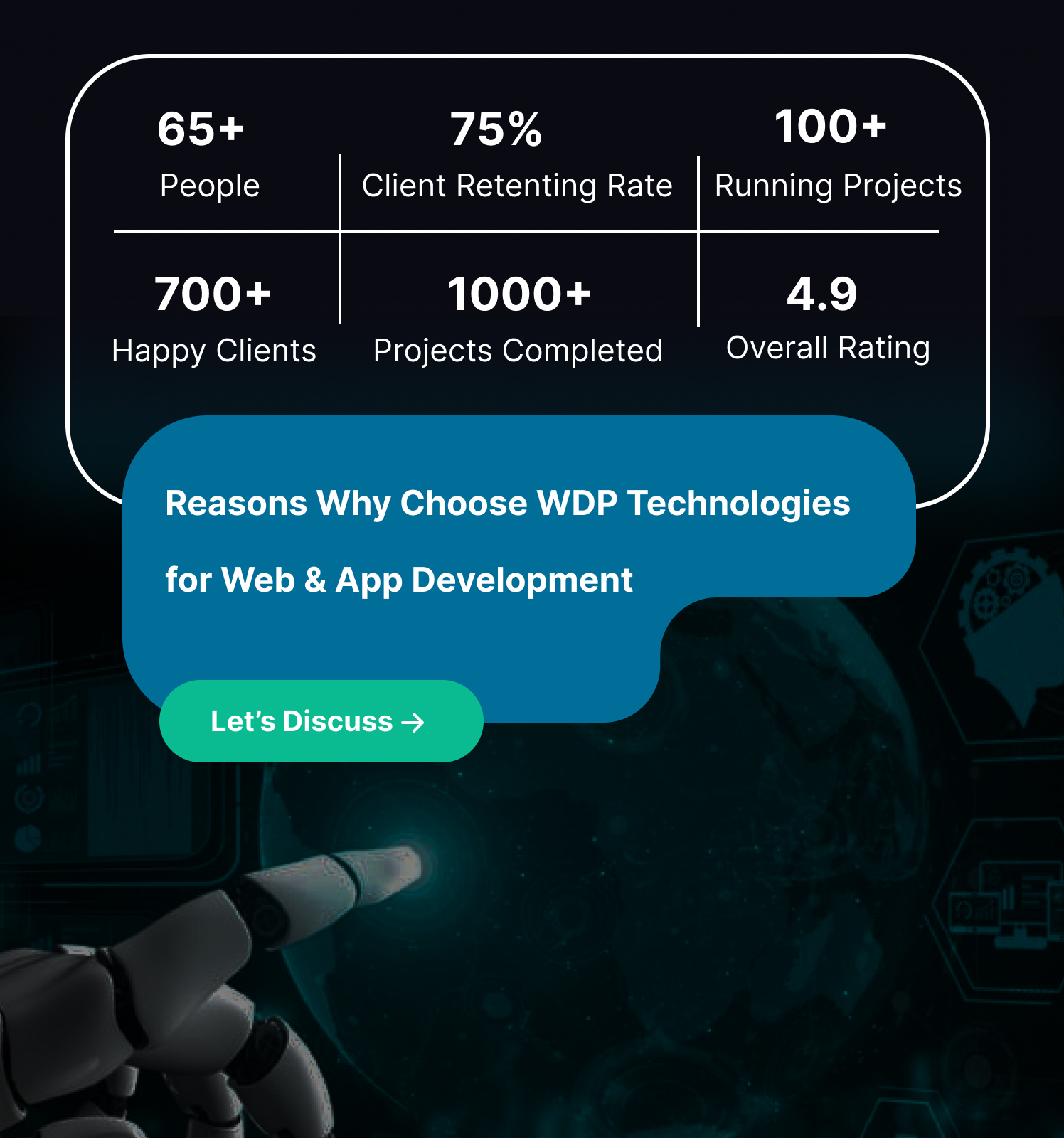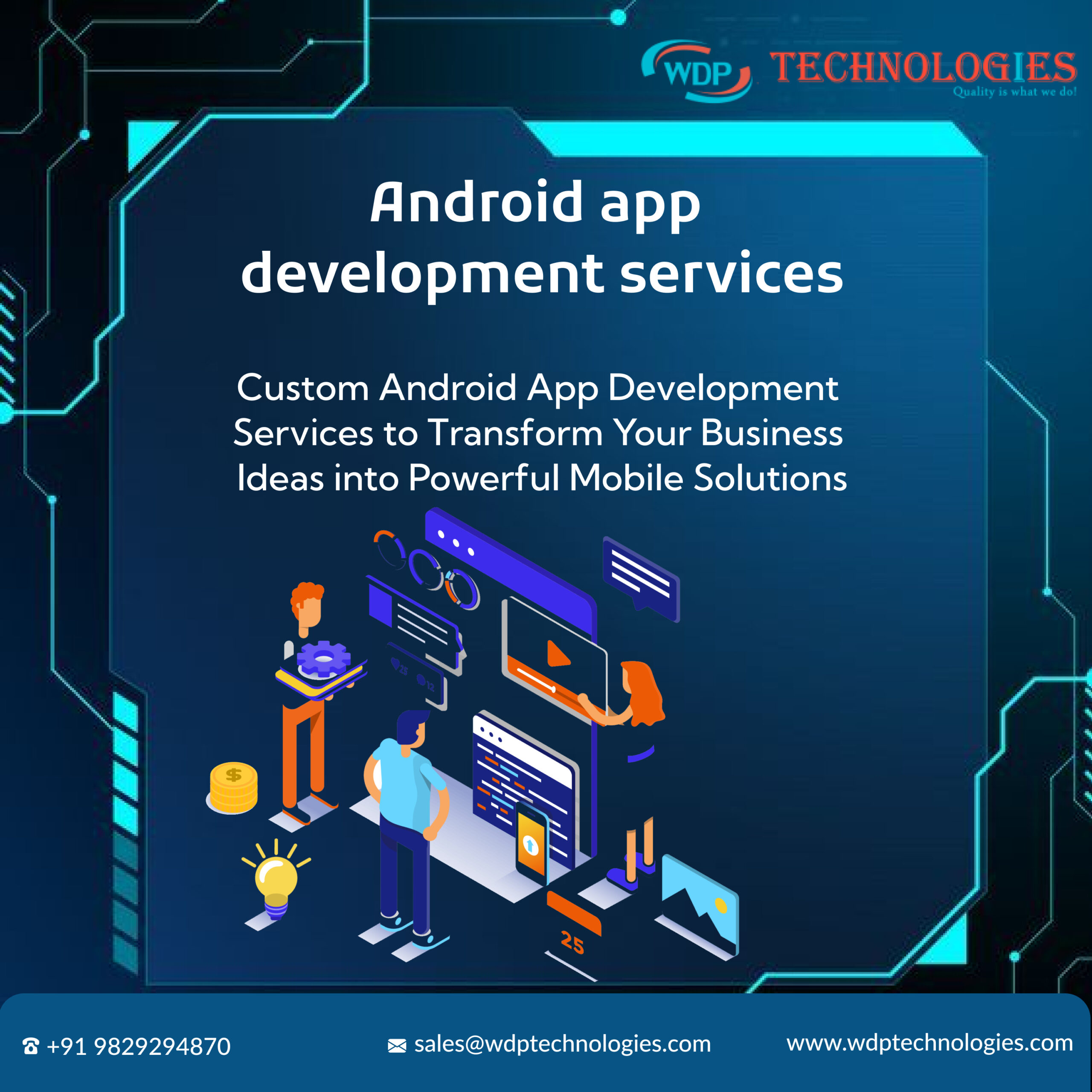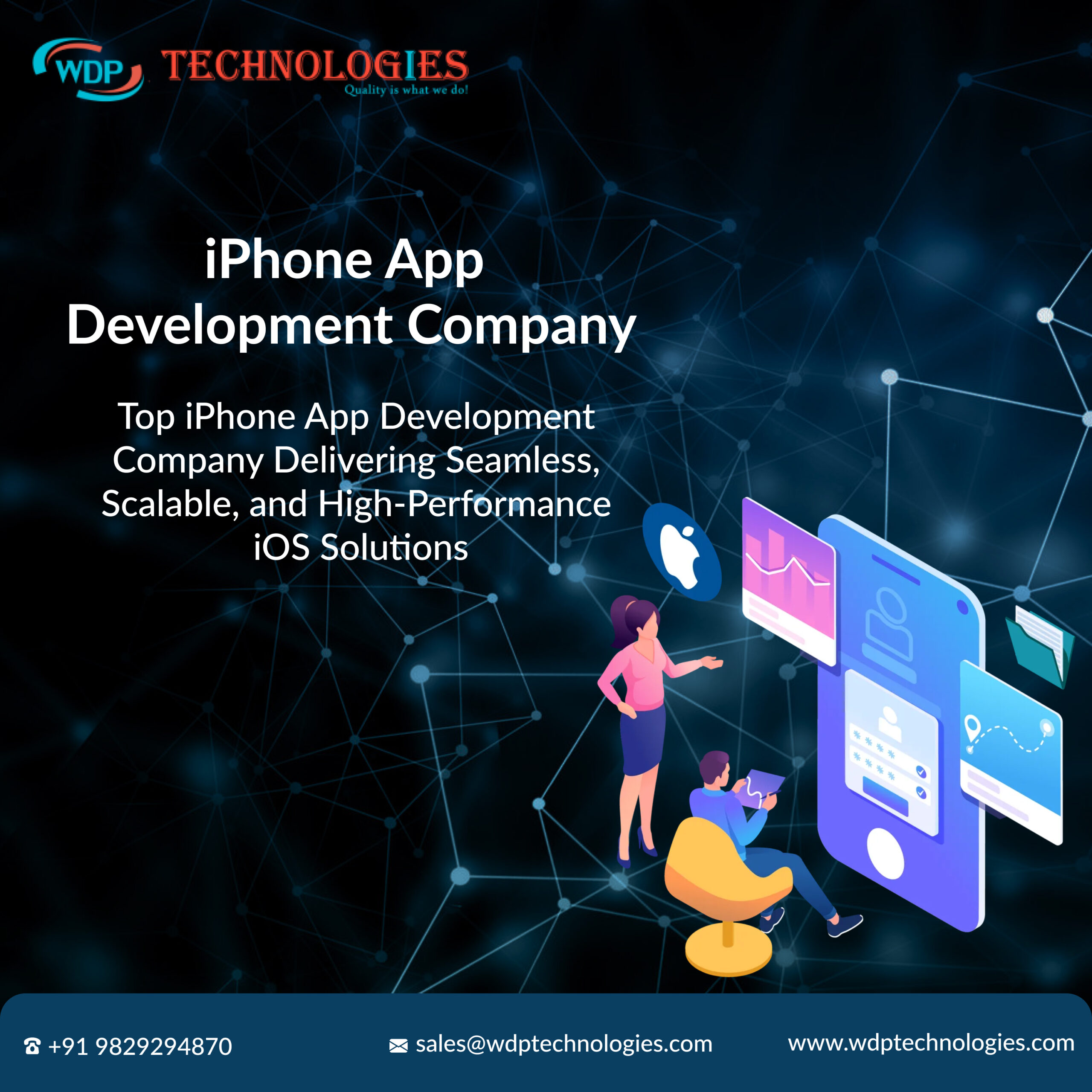Have you ever dreamed of creating an app that could transform the way people learn languages, just like Duolingo? Imagine millions of users around the globe eagerly logging in every day, not only to learn new words but to embark on a linguistic adventure that keeps them engaged, motivated, and hungry for more. If this vision excites you, then you’re in the right place!
Welcome to our comprehensive guide on language learning app development that not only mimics Duolingo’s success but also adds your unique twist to it. Whether you’re an aspiring app developer, an entrepreneur with a passion for languages, or a tech enthusiast curious about app creation, this blog is for you all.
So, get ready to roll up your sleeves and embark on this exciting journey with us. Together, we’ll explore the essential steps, key features, and best practices that will help you turn your language learning app development idea into a reality.
Are you ready to change the way the world learns languages? Let’s get started!
What is a Language Learning App?
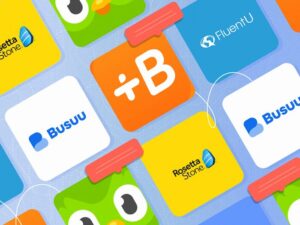
A language learning app like Duolingo is a mobile or web-based application designed to facilitate the acquisition of new languages through interactive and engaging methods. These apps often incorporate a variety of learning tools, such as vocabulary exercises, grammar lessons, pronunciation guides, and cultural insights, to provide a comprehensive learning experience.
Leveraging modern technology, they utilize features like gamification, voice recognition, and adaptive learning algorithms to tailor the educational process to individual users’ needs and progress. By making language learning accessible, flexible, and fun, these apps cater to diverse audiences, from casual learners and travelers to students and professionals seeking to enhance their language skills for personal or career growth.
Is it Worth To Create Language Learning App in 2024
Language learning app development in 2024 is a promising venture, given the growing demand for digital education tools and the rapid expansion of the e-learning market. The global e-learning market is projected to reach $374.3 billion by 2026, growing at a CAGR of 14.6% from 2021 . The online language learning market specifically is expected to grow at a CAGR of 18.7% from 2021 to 2027, reaching a market size of $21.2 billion .
Duolingo, one of the most popular language learning apps, reported over 500 million total users and more than 40 million monthly active users in 2023. Mobile learning is expected to grow at a CAGR of 23% from 2021 to 2026 . With smartphones becoming increasingly ubiquitous, language learning apps are perfectly positioned to capitalize on this trend.
However, successful language learning app development requires careful planning and differentiation. With a well-defined USP and innovative features, you can carve out your niche in this exciting and ever-growing market.
Key Features To Implement While Developing Language Learning App like Duolingo
Language learning app development that stands out in the market requires incorporating several essential features that enhance the user experience and facilitate effective learning. Here are the key features to consider:
1. User-Friendly Interface:
A crucial aspect of any successful language learning app is its user interface. It should be designed to be intuitive and easy to navigate, ensuring that users can access lessons, track progress, and explore additional features effortlessly. A clean and visually appealing design enhances user engagement and encourages regular use of the app. Providing a seamless onboarding process further aids in familiarizing new users with the app’s layout and functionality, ensuring a positive initial experience.
2. Gamification:
Gamification is instrumental in making language learning enjoyable and motivating for users. By integrating elements like points and levels, the app incentivizes progress and achievement. Users earn points for completing lessons and activities, motivating them to continue learning to unlock new levels and earn rewards. Streaks and badges reward consistent use, encouraging daily practice and fostering a habit of learning. Leaderboards add a competitive edge, allowing users to compare their progress with friends or global learners, thereby enhancing engagement and retention.
3. Interactive Lessons:
Varied and interactive lessons are essential to cater to different learning styles and enhance comprehension. Incorporating exercises for speaking, listening, reading, and writing ensures a comprehensive learning experience. Voice recognition technology enables users to practice pronunciation and receive instant feedback, enhancing language proficiency. Providing diverse content keeps users engaged and motivated, ensuring that learning remains dynamic and effective throughout their language learning journey.
4. Progress Tracking:
Effective progress tracking is critical for users to monitor their learning achievements and identify areas for improvement. Displaying detailed metrics such as completion rates, quiz scores, and lesson mastery helps users understand their progress and set realistic learning goals. Personalized learning paths adapt to users’ strengths and weaknesses, ensuring targeted learning experiences that optimize language acquisition. Transparent progress tracking fosters accountability and motivates users to continue their language learning journey with confidence.
5. Content Diversity:
Offering a wide range of languages and culturally relevant content enriches the learning experience and attracts a diverse user base. Multilingual support allows users to learn languages of interest, catering to global language learners. Cultural insights and real-life context integrated into lessons enhance understanding and application of language skills in practical scenarios. Multimedia integration with audio, video, and interactive elements makes learning engaging and immersive, catering to different learning preferences and enhancing retention.
6. Social Features:
Social features create a sense of community and facilitate collaborative learning experiences among users. Community forums enable learners to interact, share insights, and seek advice from peers, fostering a supportive learning environment. Peer reviews and language exchange options encourage practice with native speakers or proficient learners, enhancing language fluency and cultural understanding. Integration with social media platforms allows users to share progress, achievements, and language learning milestones, further promoting engagement and motivation.
7. Offline Mode:
Access to lessons and learning materials offline enables users to continue learning without internet connectivity, accommodating diverse learning environments and preferences. Offline mode allows users to download lessons, practice exercises, and review content anytime, anywhere, ensuring uninterrupted access to language learning resources. This feature enhances accessibility and convenience, particularly for users in areas with limited internet access or during travel where internet connectivity may be unreliable.
8. Notifications and Reminders:
Timely notifications and reminders keep users engaged and motivated to maintain consistent learning habits. Push notifications alert users about upcoming lessons, practice opportunities, and milestones achieved, encouraging regular interaction with the app. Personalized reminders prompt users to practice daily, reinforcing learning habits and fostering a sense of progress and achievement. Customizable notification settings allow users to tailor reminders to their preferences, ensuring a personalized and supportive learning experience.
9. Monetization Options:
Offering flexible monetization options ensures sustainable app growth and profitability. A freemium model provides basic features for free while offering premium content, advanced features, or an ad-free experience through paid subscriptions. In-app purchases allow users to unlock additional lessons, language packs, or special features, enhancing customization and user engagement. Advertisements strategically integrated into the app provide revenue opportunities while maintaining a seamless user experience. Diversifying monetization strategies ensures accessibility for all users while maximizing revenue potential for the language learning app.
10. Regular Updates and Support:
Continuous improvement and support are essential to maintaining app relevance and user satisfaction. Regular updates introduce new content, features, and improvements based on user feedback and industry trends, ensuring fresh and engaging learning experiences. Prompt customer support addresses user inquiries, technical issues, and feedback, enhancing user satisfaction and retention. Transparent communication with users about updates, enhancements, and upcoming features fosters trust and loyalty, contributing to long-term app success and user engagement.
11. Security and Privacy:
Protecting user data and ensuring privacy compliance are paramount for maintaining user trust and app credibility. Implementing robust security measures, such as encryption protocols and secure login methods, safeguards user information from unauthorized access or breaches. Adhering to stringent privacy policies and regulations ensures transparent data handling practices, informing users about data collection, usage, and storage. Providing clear opt-in choices for data sharing and respecting user preferences enhances transparency and builds confidence in the app’s commitment to user privacy and security.
Duolingo like Language Learning App Development Steps
Developing a language learning app involves several key steps to ensure its success and effectiveness. Here’s a comprehensive guide on the steps involved in developing a language learning app:
1. Define Your Goals and Target Audience
Before diving into development, clearly define the goals of your language learning app. Determine what languages you will offer, the proficiency levels you’ll cater to, and the specific educational objectives you aim to achieve. Identify your target audience, whether it’s beginners, travelers, students, or professionals, and understand their needs and preferences.
2. Conduct Market Research and Competitor Analysis
Research the current landscape of language learning apps. Identify your competitors, their strengths, weaknesses, and unique selling points. Analyze user reviews and feedback to understand what users like and dislike about existing apps. Use this information to identify gaps in the market and opportunities for differentiation.
3. Outline Your App’s Features and Functionality
Based on your goals and market research, create a detailed list of features and functionalities your app will offer. This should include core features like interactive lessons, progress tracking, gamification elements (points, levels, badges), multimedia content (audio, video), and social features (community forums, language exchange). Prioritize features based on their importance to your target audience and differentiate them from competitors.
4. Choose the Right Technology Stack
Select the appropriate technology stack for your language learning app, considering factors like platform compatibility (iOS, Android, web), scalability, security requirements, and development resources. Common technologies used include front-end frameworks (React Native, Flutter), back-end frameworks (Node.js, Django, Laravel), and database systems (MySQL, MongoDB).
5. Design User Interface and Experience (UI/UX)
Create wireframes and prototypes that outline the app’s navigation flow, user interface design, and user experience. Focus on creating an intuitive and visually appealing interface that enhances usability and engagement. Incorporate feedback from usability testing to refine the UI/UX design and ensure it meets the needs and preferences of your target audience.
6. Develop the Backend and Frontend of the App
Begin development by building the backend infrastructure, including database design, server-side logic, API integration, and user authentication. Develop the frontend of the app, implementing the UI/UX design and integrating with backend services. Implement core features such as interactive lessons, progress tracking, and gamification elements according to your outlined specifications.
7. Integrate Language Learning Tools and Content
Integrate language learning tools such as speech recognition, translation services, and pronunciation guides into your app to enhance learning effectiveness. Develop or license content, including vocabulary lists, grammar exercises, cultural insights, and multimedia resources (audio, video). Ensure that content is engaging, accurate, and aligned with educational objectives.
8. Implement Gamification and Progress Tracking Features
Integrate gamification elements such as points, levels, streaks, and badges to motivate users and reward their progress. Implement progress tracking features that provide users with real-time feedback on their performance, quiz scores, and learning milestones. Personalize learning paths based on user preferences and performance to optimize the learning experience.
9. Test and Debug Your App
Conduct thorough testing of your language learning app to identify and fix any bugs, usability issues, or performance issues. Perform functional testing, usability testing, compatibility testing (across devices and platforms), and security testing to ensure the app meets quality standards. Gather feedback from beta testers and iterate on the app based on their suggestions and insights.
10. Launch Your App and Market It
Prepare for the launch of your language learning app by creating marketing materials, including app store descriptions, screenshots, and promotional videos. Implement app store optimization (ASO) strategies to improve visibility and downloads. Utilize digital marketing channels such as social media, blogs, influencers, and paid advertising to reach your target audience and generate initial traction.
11. Gather User Feedback and Iterate
After launching your app, actively collect user feedback through app reviews, surveys, and analytics data. Use this feedback to identify areas for improvement, prioritize feature enhancements, and address user concerns. Continuously iterate on your app based on user feedback and market trends to enhance user satisfaction and retention.
12. Provide Ongoing Maintenance and Support
Ensure ongoing maintenance and support for your language learning app by releasing regular updates, fixing bugs, and optimizing performance. Monitor app performance and analytics to identify opportunities for improvement and respond promptly to user inquiries and support requests. Maintain data security and compliance with relevant regulations to protect user information.
Top 5 Language Learning Apps Like Duolingo
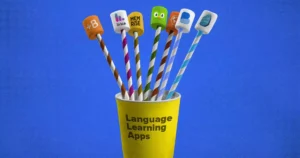
These apps like Duolingo offer diverse methodologies and features to cater to different learning styles and goals. Whether you prefer structured lessons, immersive environments, social interaction, or personalized learning paths, these alternatives to Duolingo provide effective tools and resources to enhance your language learning journey.
1. Babbel
Babbel stands out for its practical approach to language learning, focusing on conversation skills and everyday use of language in real-life situations. With courses available in 14 languages, Babbel offers structured lessons that progress from beginner to advanced levels. The app incorporates interactive exercises, speech recognition technology for pronunciation practice, and personalized review sessions to reinforce learning. Babbel’s emphasis on grammar and vocabulary ensures a comprehensive understanding of the language, making it suitable for learners looking to build practical conversational skills.
2. Rosetta Stone
Rosetta Stone is renowned for its immersive language learning method, which emphasizes natural language acquisition without translation. Available in 24 languages, Rosetta Stone uses interactive lessons that gradually introduce new vocabulary and grammar concepts through visual and audio cues. The app focuses on developing pronunciation and fluency by immersing learners in the target language’s environment. Features include speech recognition for instant feedback on pronunciation, personalized lesson plans, and an adaptive learning algorithm that adjusts to the user’s pace and progress.
3. Memrise
Memrise utilizes mnemonic techniques and spaced repetition to enhance vocabulary retention and language proficiency. Available in numerous languages, Memrise offers courses created by both language experts and the community, providing a diverse range of learning materials. The app features interactive flashcards, audio and video clips for pronunciation practice, and gamification elements to keep learners motivated. Memrise’s offline mode allows users to continue learning without an internet connection, making it convenient for travelers or those with limited access to data.
4. Busuu
Busuu combines language learning with social networking, offering a platform for users to connect with native speakers for language exchange and feedback. With courses available in 12 languages, Busuu focuses on writing and speaking skills through conversational lessons and grammar exercises. The app features interactive exercises with instant feedback, peer-reviewed writing exercises, and personalized study plans based on individual learning goals. Busuu’s offline mode enables users to download lessons and practice language skills on the go, enhancing accessibility and flexibility.
5. HelloTalk
HelloTalk distinguishes itself as a language exchange platform that connects users with native speakers around the world for language practice. Supporting multiple languages, HelloTalk facilitates real-time chat and voice calls, allowing learners to engage in language exchange and receive feedback from native speakers. The app features text correction, voice messaging for pronunciation practice, and social features such as language communities and language learning groups. HelloTalk’s interactive approach to language learning encourages cultural exchange and fosters language fluency through direct interaction with native speakers.
How Long Does It Take To Develop An App Like Duolingo?
🔹Language Learning app development like Duolingo typically requires a significant amount of time due to the complexity and breadth of features involved. Here’s a more focused breakdown of the estimated time required for each phase:
🔹Planning and Research: This initial phase, where goals are defined, market research is conducted, and features are outlined, generally takes about 5-10 Days. This stage is crucial for setting the foundation and direction of the project.
🔹Design: User interface (UI) and user experience (UX) design involve creating prototypes, designing interface elements, and ensuring a seamless user journey. Design iterations and user testing may extend this phase to 2-3 months, depending on complexity and feedback.
🔹Development: Backend and frontend development involves building the app’s architecture, integrating features like gamification, progress tracking, and interactive lessons. Developing these functionalities typically takes 4-6 months, depending on the number of features and complexity.
🔹Testing: Quality assurance (QA) testing ensures the app functions correctly across different devices, platforms, and user scenarios. Testing can take 1-2 months, including bug fixing and performance optimization.
🔹Deployment and Launch: Deploying the app to app stores (iOS, Android) and web platforms, final preparations, and app store optimization (ASO) can take around 1 month. This includes preparing marketing materials and promotional activities.
🔹Post-Launch and Maintenance: Ongoing maintenance, updates, and support continue after launch to address user feedback, fix bugs, and add new features. This phase is continuous and extends throughout the app’s lifecycle.
Total Time Required For Language Learning App Development: 7 to 8 Months
How Much Does It Cost To Create A Language Learning App?
App complexity is a key factor affecting the cost and development time of your language learning app. A simple app with basic features like flashcards and quizzes will be much cheaper and faster to create than one with fancy features like AI conversation practice or elaborate games. The more complex the app, the more functionalities, content, and potential hurdles there are to navigate during development.
The cost of creating a language learning app can vary significantly depending on several factors, making it difficult to give a one-size-fits-all answer. Here’s a breakdown of cost for language learning app development:
- Basic App (MVP): $10,000 – $25,000
- Medium Complexity App: $25,000 – $40,000
- Advanced App with AI features: $50,000+
Remember, these are just estimates. For a more accurate idea of the cost, it’s wise to discuss your project with mobile app development companies and get quotes based on your specific needs.
How Do Apps Like Duolingo Make Money?
Apps like Duolingo employ several monetization strategies to generate revenue while offering a significant portion of their services for free. Here are the primary ways Duolingo and similar language learning apps make money.
1. Subscriptions (Duolingo Plus):
This premium version offers users an ad-free experience, unlimited retries on lessons, streak freezes to maintain progress streaks, and additional challenges. Subscriptions provide a reliable and recurring source of revenue from users willing to pay for enhanced features and convenience.
2. Display Ads:
Non-paying users encounter display ads during lessons and between levels. These ads generate revenue from advertisers interested in reaching Duolingo’s large and engaged user base. The ads are carefully targeted to align with user preferences, ensuring relevance and effectiveness.
3. Duolingo Classes:
Paid group classes offer users opportunities for spoken language practice facilitated by community-ranked teachers. These classes provide a structured environment for learners to apply their language skills in real-time conversations, enhancing the overall learning experience and generating revenue from course fees.
4. Language Tests:
Duolingo offers official language proficiency tests that are accepted by over 4000 institutions globally. Priced around $50 each, these tests provide users with a recognized certification for language proficiency, catering primarily to individuals seeking educational or professional advancement.
5. Translation Data:
Duolingo monetizes user-translated content by selling translations to companies like BuzzFeed and CNN. Leveraging its diverse user base, Duolingo taps into the collective efforts of language learners who translate content as part of their learning experience. Companies benefit from accurate translations while Duolingo generates revenue from these commercial partnership
“Also Read: How Does Upside Make Money
Why Choose WDP Technologies For Language Learning App Development
Choosing WDP Technologies for language learning app development ensures access to a seasoned team with expertise in creating innovative and scalable solutions. With a track record in crafting user-centric applications, WDP Technologies excels in integrating advanced features like gamification, interactive lessons, and robust backend systems. Their commitment to quality assurance and client satisfaction, coupled with a deep understanding of educational technology trends, makes them an ideal partner for delivering a customized, high-performing language learning app that meets both user needs and market demands.
Wrapping Up
Language learning app development requires careful planning, innovative thinking, and a deep understanding of user needs and market trends. From defining clear educational goals and user interfaces to implementing advanced features like gamification and real-time feedback systems, every step plays a crucial role in creating a successful app. Continuous iteration based on user feedback, coupled with robust testing and deployment strategies, ensures a polished product that enhances language acquisition and user engagement.
By partnering with experienced developers and staying attuned to technological advancements, developers can create impactful language learning apps that not only educate but also inspire and empower learners worldwide.



